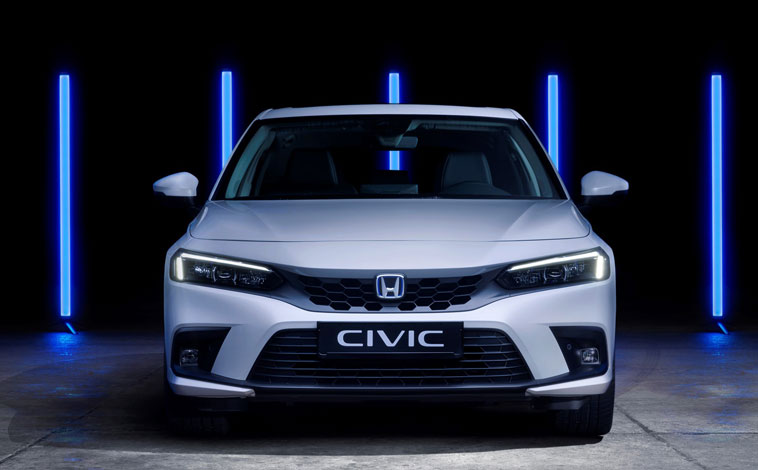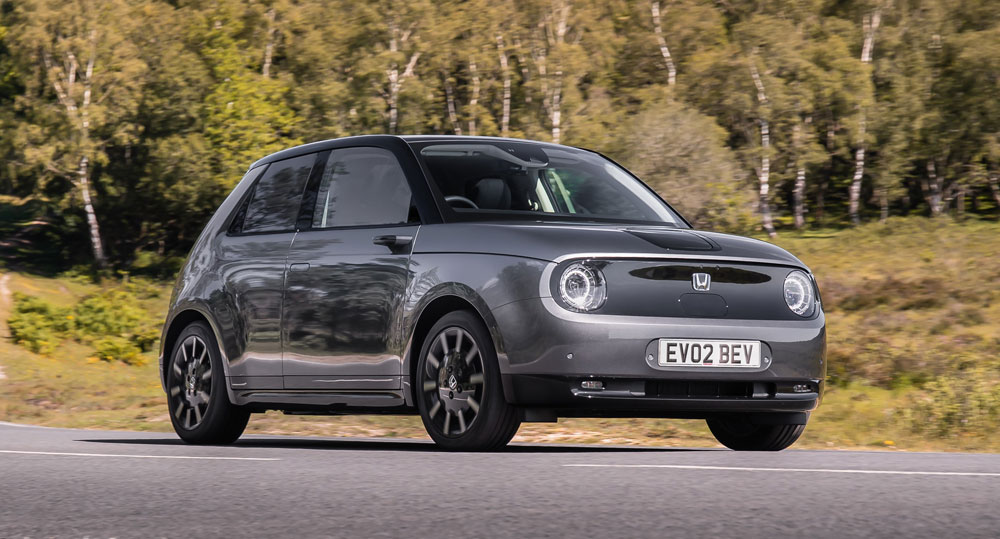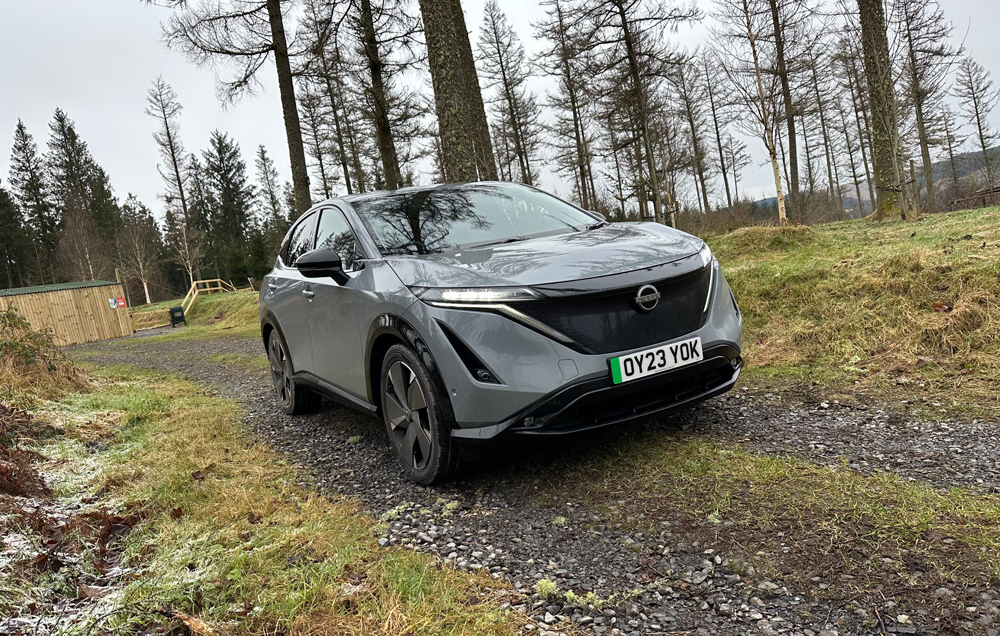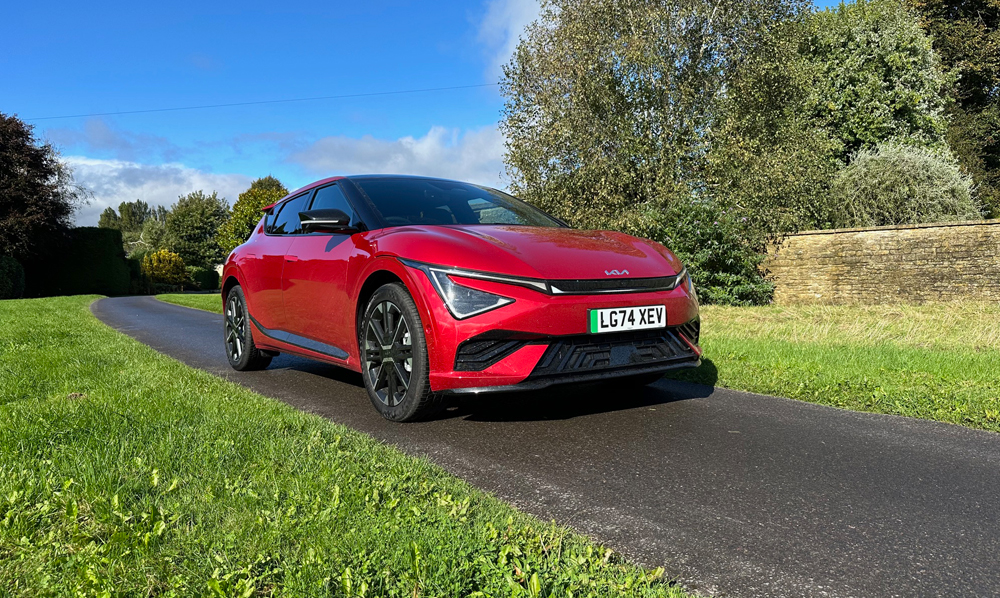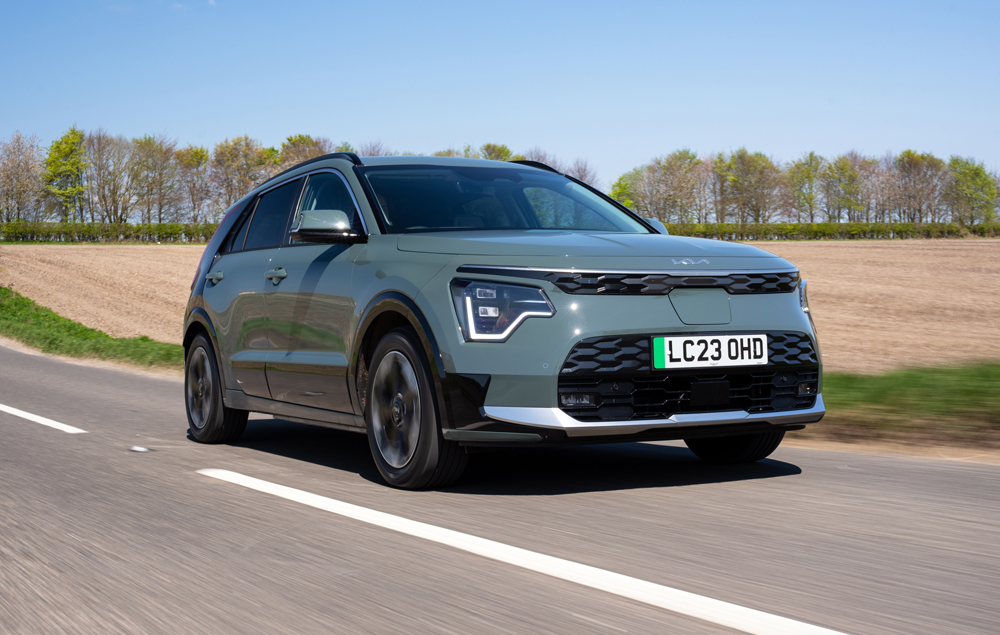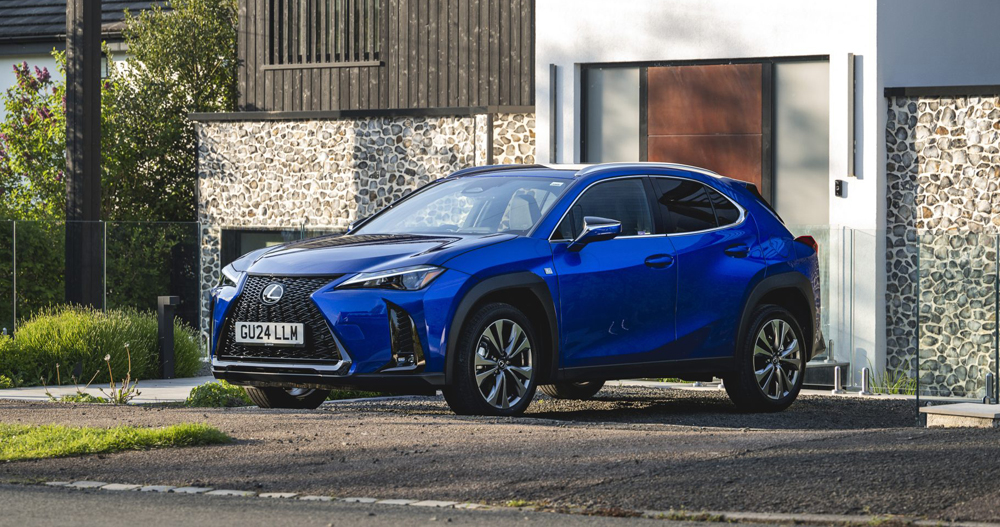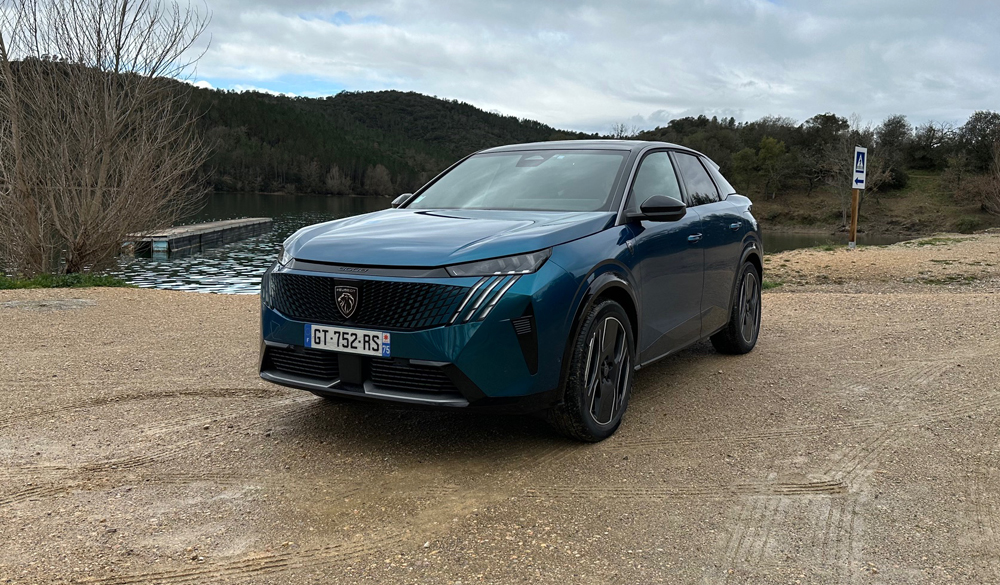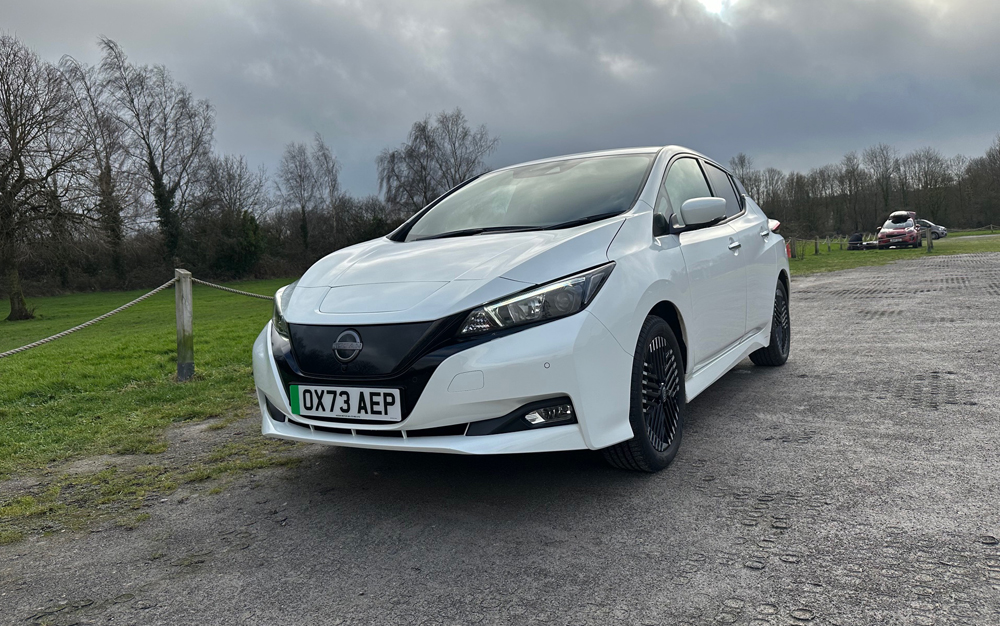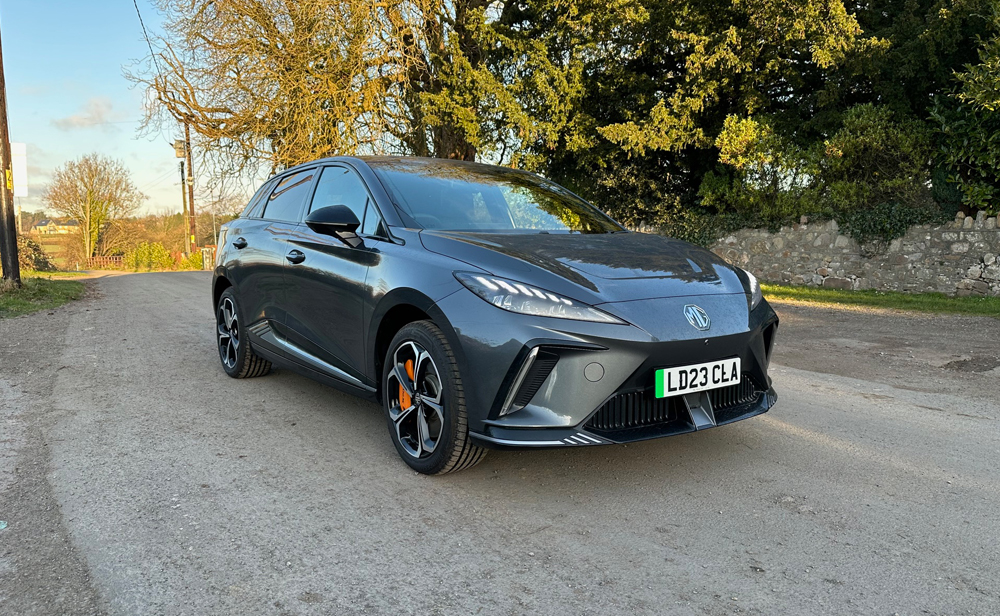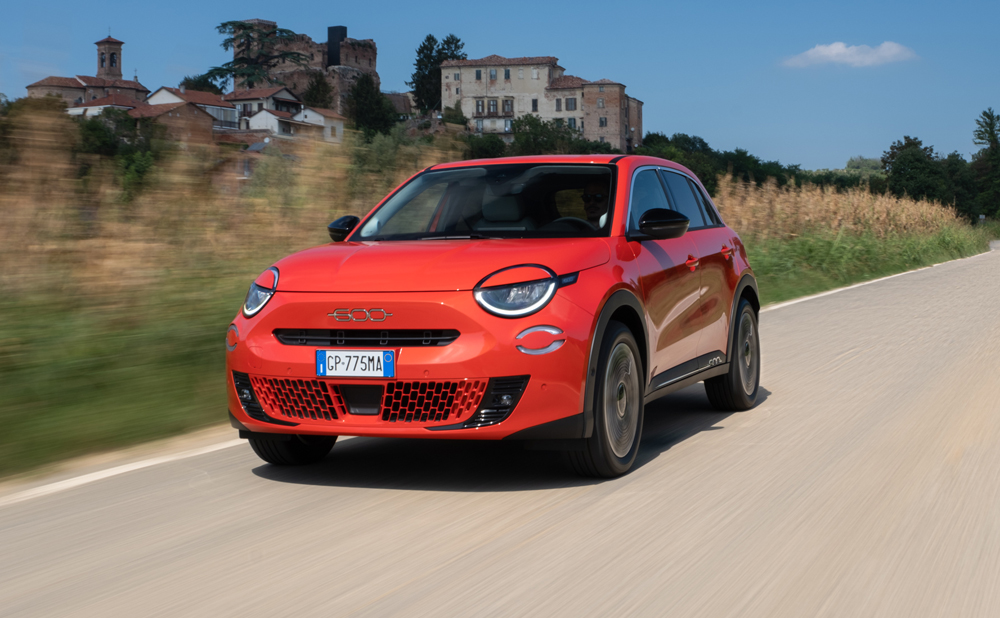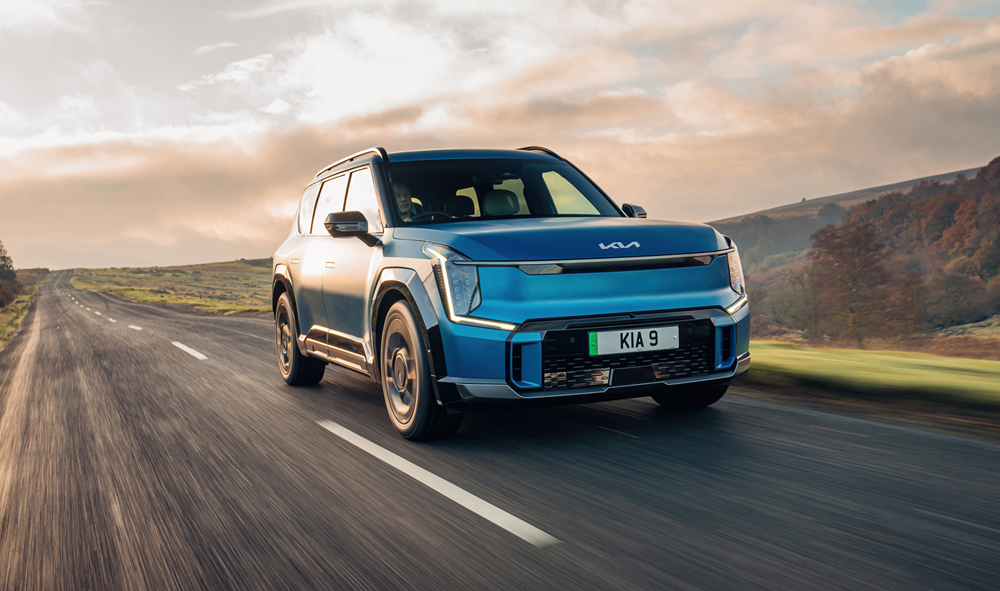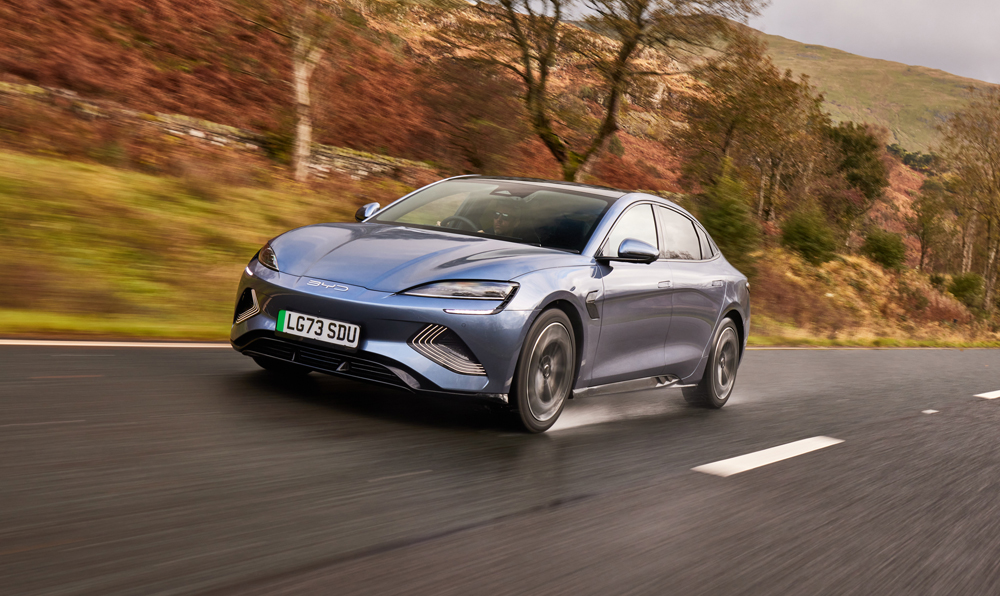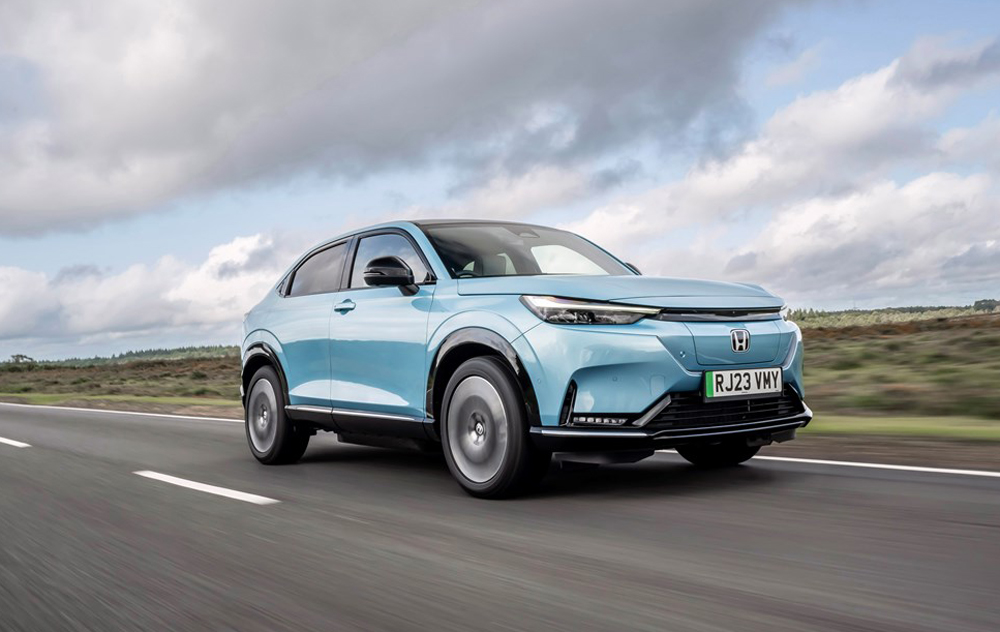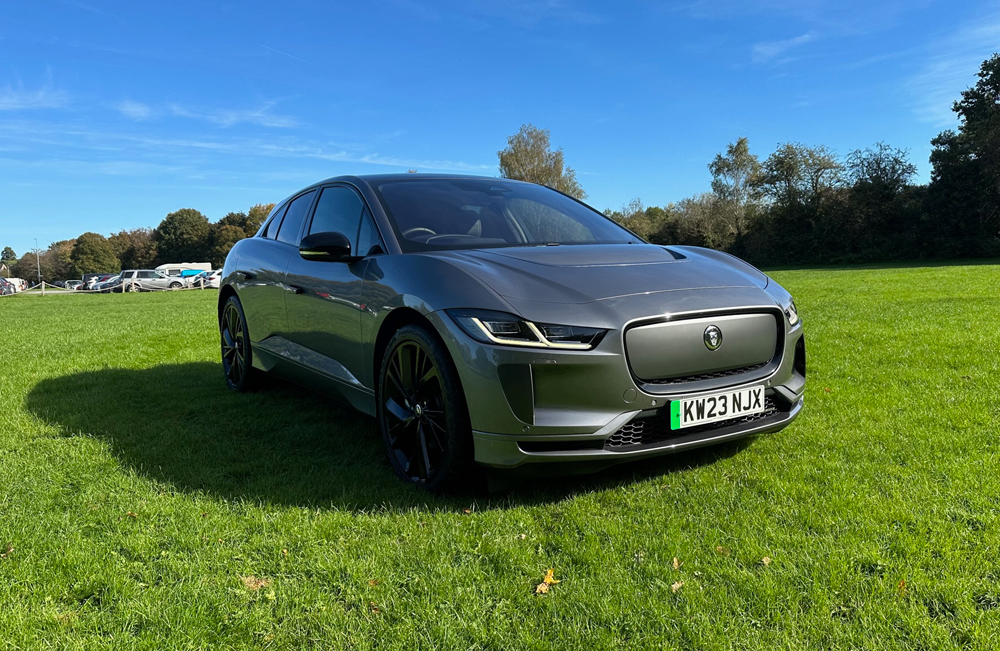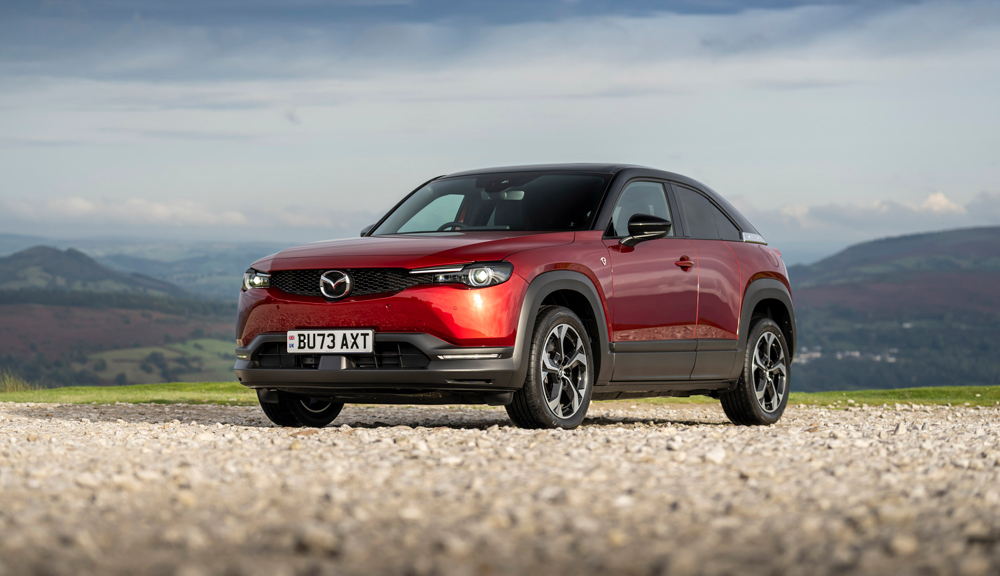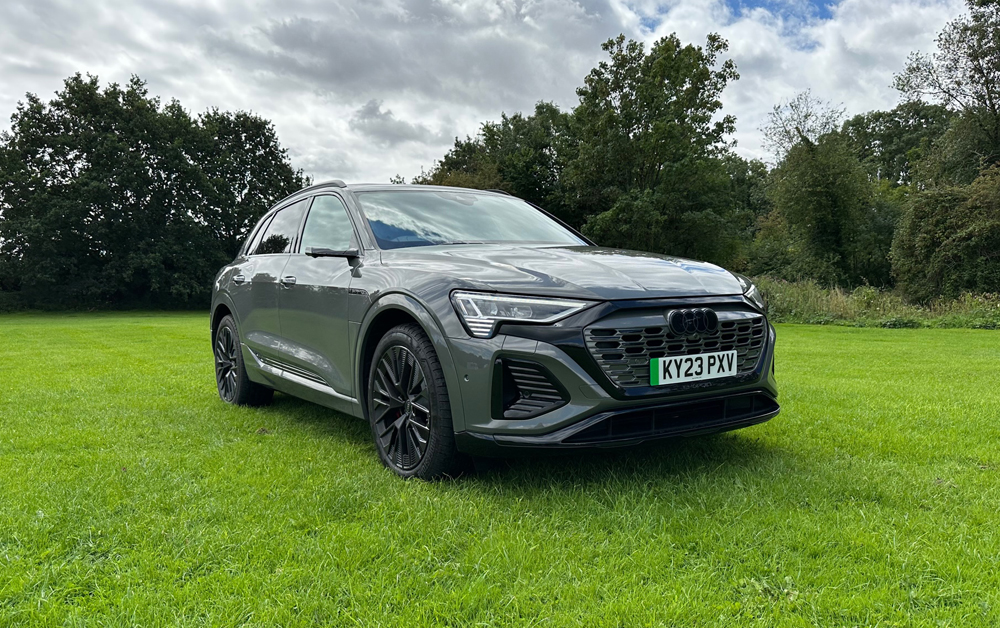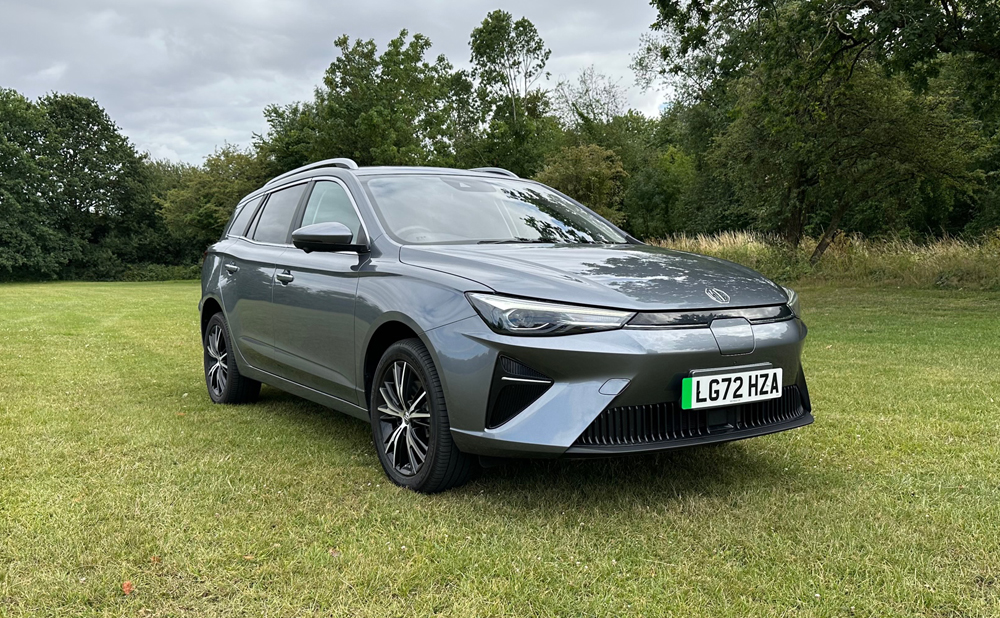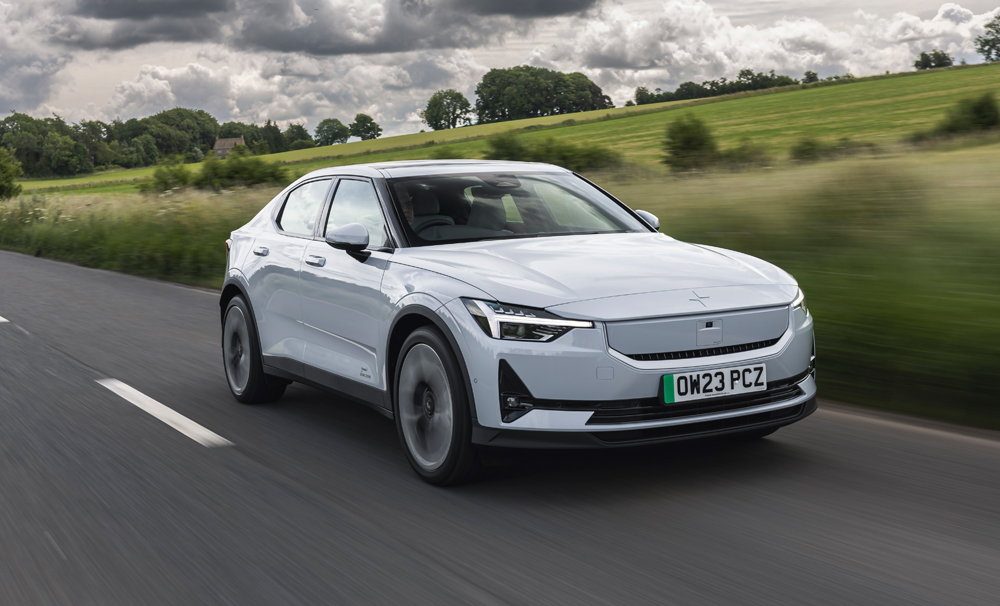
Honda
e
The Honda e is the Japanese car maker’s first fully electric vehicle designed from the ground up for Europe. Boasting retro styling and a wealth of on-board kit, it’s practical, economical to run and delivers great performance when faced with the open road.
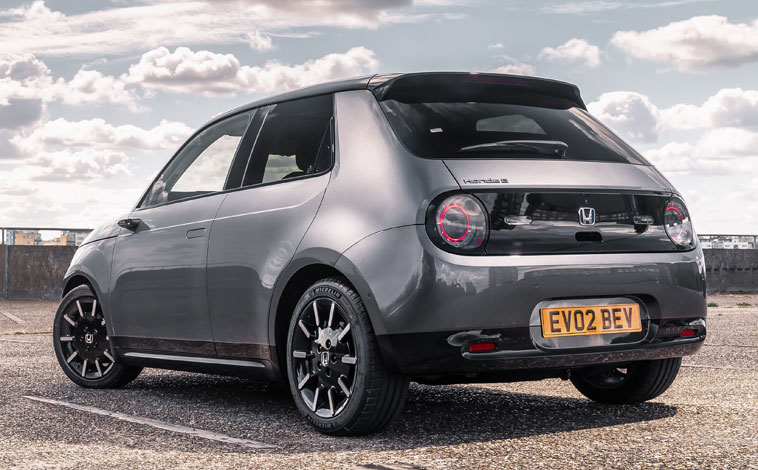
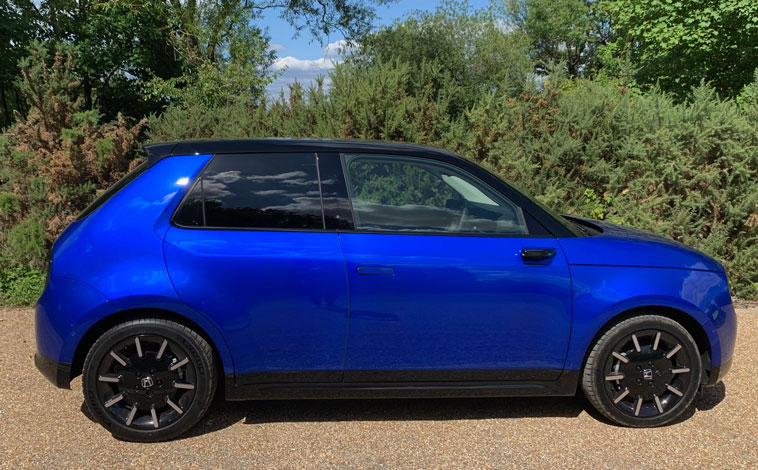
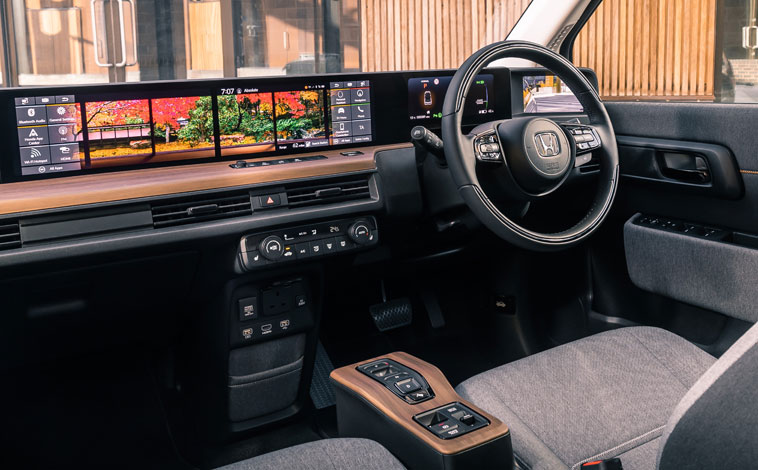
The good
Futuristic styling and class-leading technologyThe bad
Limited range between chargesTech Specs
Test Drive
Honda e – First Drive (2020)
Boasting cute retro styling, lounge-like comfort and rapid-fire performance, Honda’s first fully electric car for Europe is guaranteed to turn heads wherever it goes.
It’s called the Honda e and this funky compact five-door hatchback is available in standard format costing £26,660 or Advanced trim priced from £29,160.
It’s all new from the ground up. Rather than simply electrifying an existing model, Honda chose to design a completely fresh car and the e is packed with innovative features – many of which would usually be found on expensive premium brands.
Approach the car from any angle and the e looks quirky in its design with curvaceous lines, rounded front and rear light clusters that are a throwback to the 1972 Honda Civic, pop-out door handles, a glass roof and short overhangs that help this vehicle turn on a sixpence. In fact, the 4.3-metre turning circle makes the car just perfect for city life.
One of the first things you will notice is the lack of traditional side mirrors. Instead, these are replaced by a Side Camera Mirror System with compact cameras that deliver live images onto two six-inch screens at either end of the dashboard.
And when you move inside it’s impossible not to be wowed by the minimalist interior that has been beautifully crafted with the focal point being two 12.3-inch touchscreens that offer access to all manner of features. The driver can personalise their screen according to preference of systems and apps and the front seat passenger can access their own settings too. These screens can also be switched back and forth.
The level of on-board technology would leave the geekiest techie thinking all their Christmases had come at once. There is smartphone connectivity via Apple CarPlay or Android Auto, full navigation and even an AI-powered personal assistant that works similarly to Alexa and is brought to life with the words ‘OK Honda’ – this system can offer all manner of assistance on the move, such as restaurant recommendations, weather forecasts and parking options.
As well as USB ports, there is a three-pin plug and even an HDMI socket, so when parked up, you can sit back in the exceptionally comfy seats and watch a movie on the screen. Further creature comforts include heated seats, a heated steering wheel, Bluetooth hands-free telephone and plenty more besides.
The entry level 135PS (100kW) Honda e boasts 315Nm of torque and can sprint to 62mph from a standing start in 9.0 seconds. We opted for the slightly more powerful e Advanced which has 154PS (113kW) of power and shaves a second off the 0-62mph time. Top speed is 90.1mph and the e offers 137 miles of range under WLTP testing. It’s worth noting that the total range on the Advanced model, if optional 17-inch wheels are fitted, drops to 125 miles between charges.
Comfort levels inside the car are impressive with a thoroughly modern feel thanks to its classy design and futuristic layout. Although it can appear a little overwhelming initially, it has all been really well thought out and the screens are easy to operate on the fly. And it’s always nice to discover a climate control system that’s easily adjusted via separate buttons so you don’t need to access any over-complicated drop down on-screen menus to turn on the air con.
So the new Honda e looks the business and has all the technology imaginable, but how does it cope when put to the test? The answer is really well. We fizzed around busy Windsor roads and then out onto the nearby motorways for a two-and-a-half-hour test drive and the car was up to any challenge.
The acceleration is both smooth and constant with instant power for sharp bursts of acceleration to make light work of overtaking. The road-holding is ultra grippy and, with its independent four wheel suspension, the rear wheel-drive model feels well balanced as it powers through the country lanes. It is agile, easy to manoeuvre and also delivers nicely weighted steering.
Our Advanced model had a Sport mode which sharpened up the handling further and even when pushed hard, this EV is well insulated against road surface and wind noise.
The lack of conventional door mirrors takes a little getting used to, but not too long, and the cameras can be adjusted position-wise just as you would any other side mirror. The e also features a rearview mirror that offers a camera or standard view of what’s going on behind the vehicle.
Another notable highlight on the Honda e is the Single Pedal Control System which improves driving efficiency in urban environments. When activated at the press of a button, it allows the driver to accelerate, slow and stop the car using just the accelerator pedal. The level of deceleration can be adjusted via steering wheel paddles. Once again, it’s a feature that once mastered, makes complete sense when sitting in stop start city traffic.
On the practicality front, the Honda e has a boot that can swallow 171 litres of kit – a limit that increases to 861 with the rear seats dropped flat. And there are numerous practical storage options scattered throughout the car, including a pull-out cup holder, glovebox and deep trays. While there is room for four people inside the vehicle, back seat passengers will find leg room is a tad limited if the front seats are pushed right back.
Charging the Honda e takes 4.1 hours on a 6.6kW charger but an 80 per cent charge can be achieved in just 30 minutes at a fast charge point.
As is the Honda way, safety systems are comprehensive with features including forward collision warning, high beam support, collision mitigation braking with pedestrian detection, intelligent adaptive cruise control with cut-in prediction, lane departure warning with road departure mitigation, lane keep assist, blind spot monitoring, traffic sign recognition, cross traffic monitor and lots more.
Looking ahead, Honda believes that by 2030 two thirds of its global car sales will feature some form of electrification. The Honda e is an encouraging glimpse into that future, but it’s been made available to sample now.
Latest Related NEWS
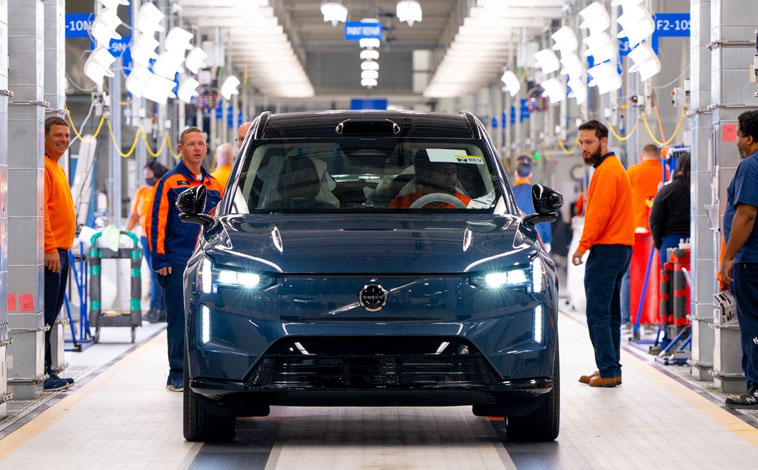
Volvo EX90 rolls off production line
Volvo is in a celebratory mood as its factory outside Charleston, South Carolina, [...]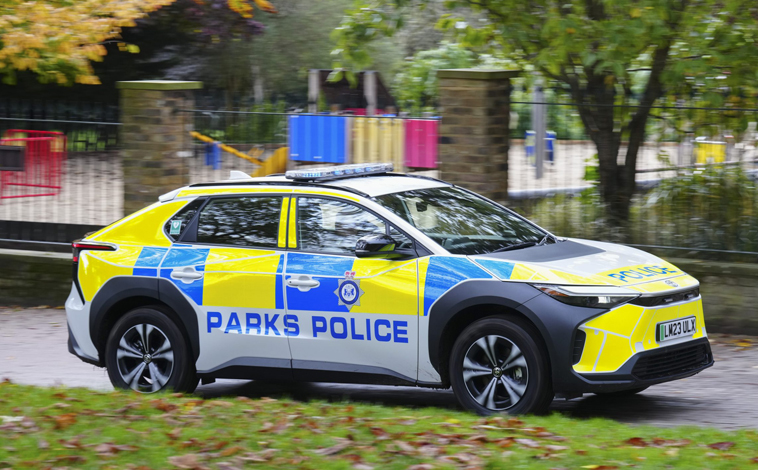
Toyota’s bZ4X is out on policing duties
The Toyota bZ4X has taken on its first “blue light” public service role, [...]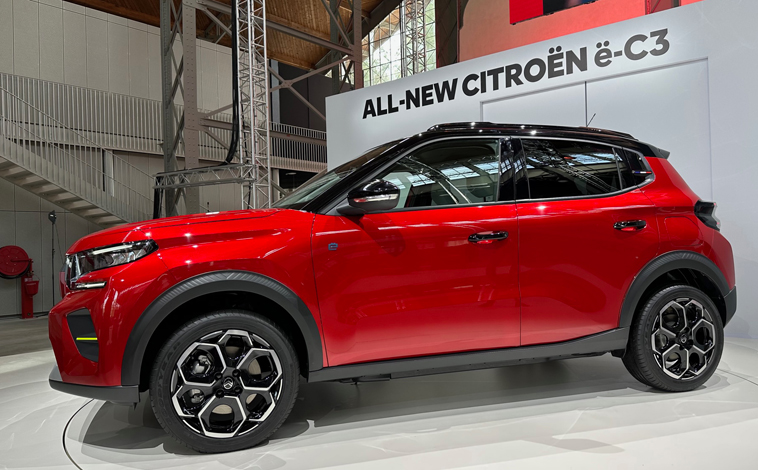
Citroen unveils its e-C3 game-changer
Citroen may not have reinvented the wheel, but it has certainly re-written the [...]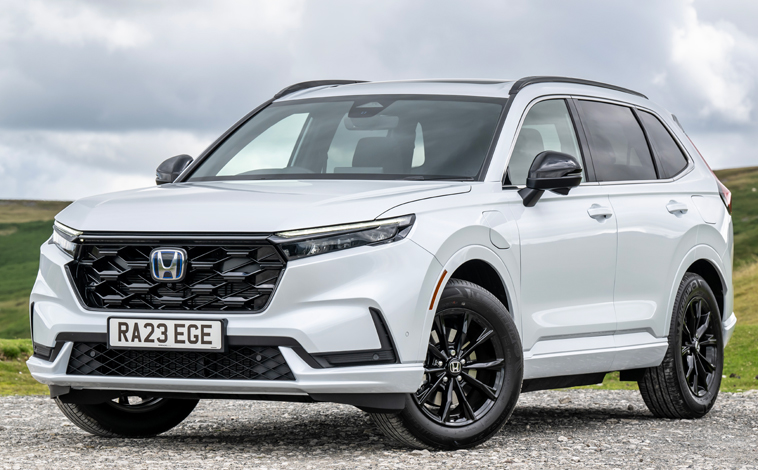
Introducing the sixth-gen Honda CR-V
The sixth generation Honda CR-V debuts later this year with a bolder appearance [...]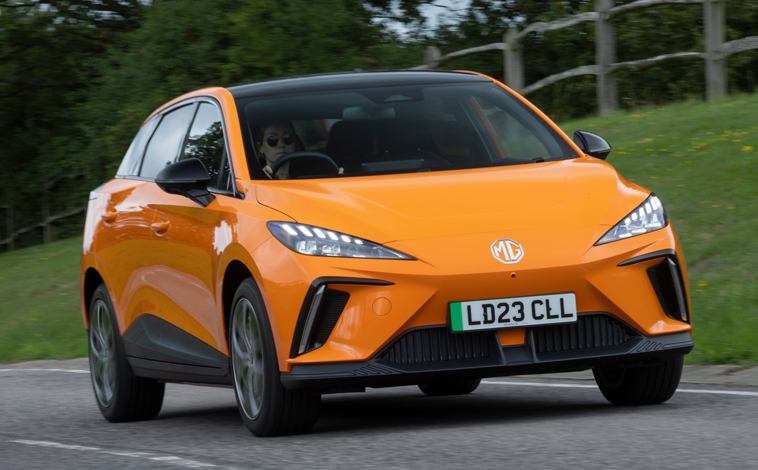
Latest MG4 EV can deliver 320-plus miles
MG has revealed the official pricing and specification of its new MG4 EV [...]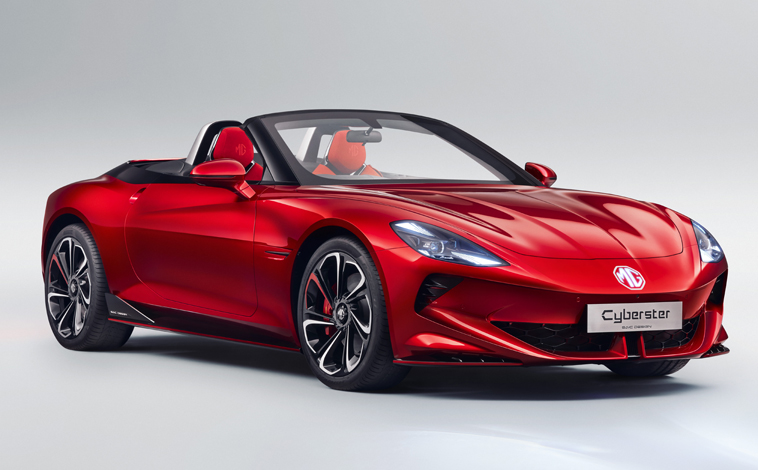
MG returns to its epic sports car roots
A pre-production design model of MG’s dramatic new sports car, the Cyberster, has [...]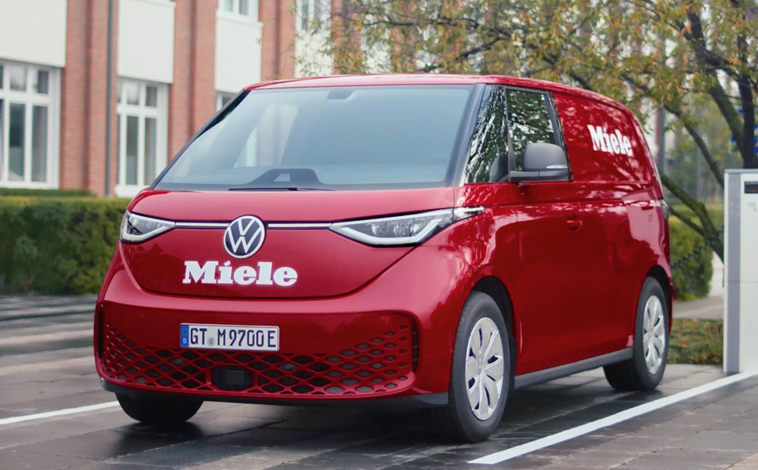
There’s a real Buzz about Miele vans
Premium household appliance manufacturer, Miele, has become the first customer to receive five [...]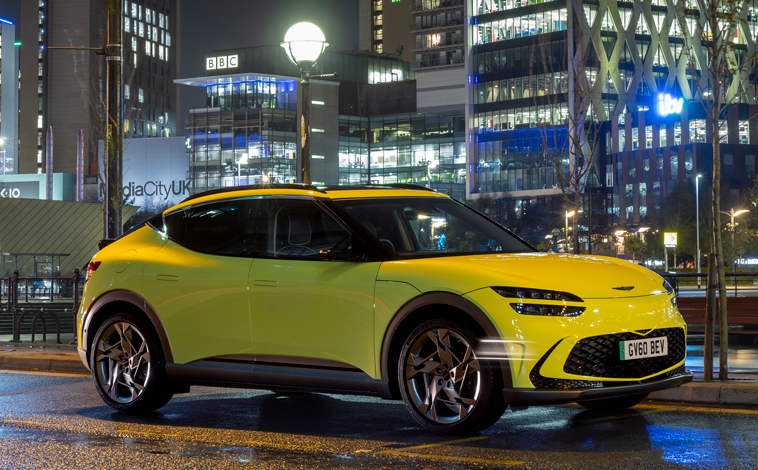
Genesis GV60 at the Salon Privé London
Luxury brand Genesis is the latest major car company to confirm its presence [...]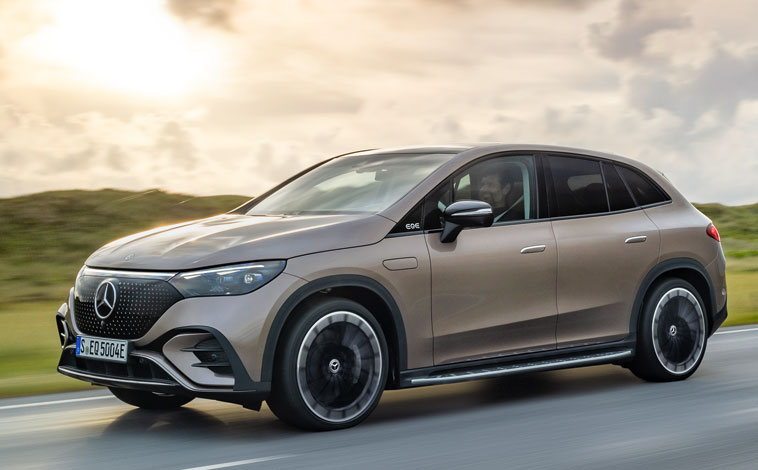
Mercedes electric EQE SUV on sale
The Mercedes-Benz EQE SUV is now on sale in the UK with prices [...]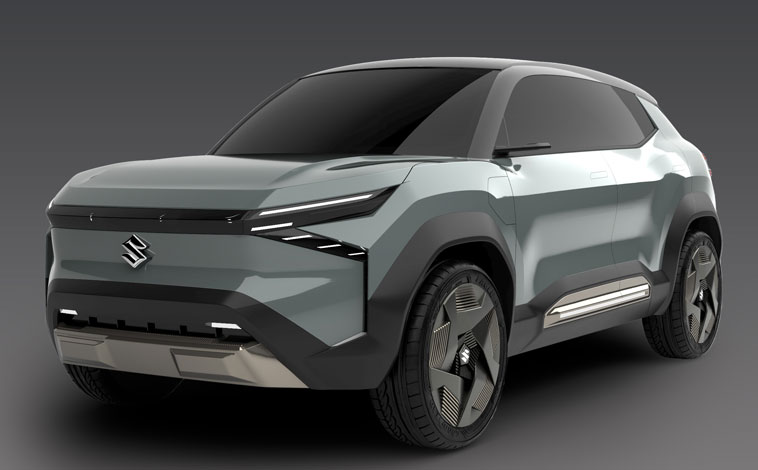
Suzuki’s EV concept car is unveiled
The world premiere of Suzuki’s EV concept model eVX has been made at [...]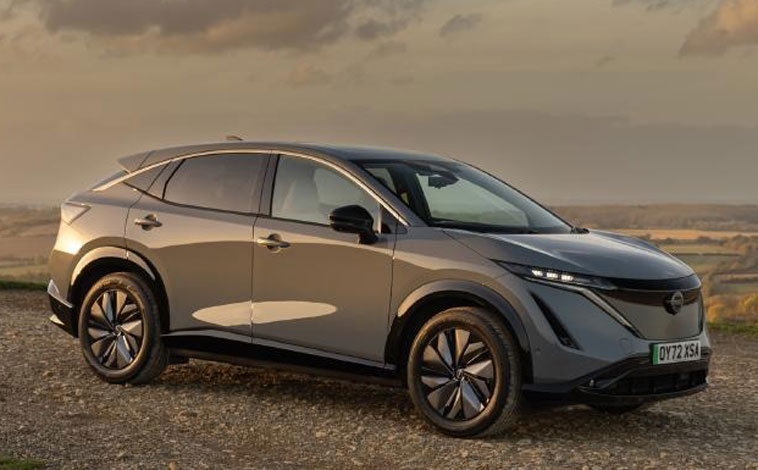
Nissan puts safety top of its priorities
Placing safety at the forefront of its ambitions, Nissan continues to push the [...]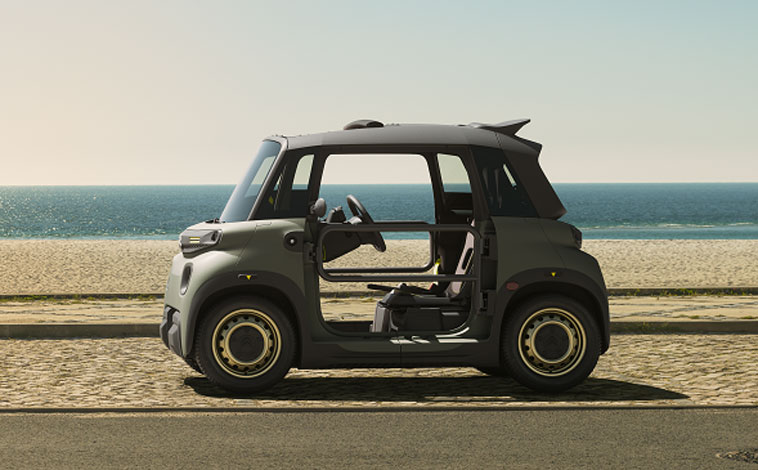
My Ami Buggy models are on their way
Citroën has announced that a limited run of just 1,000 My Ami Buggy [...]
Volvo launches new seven-seater EV
Volvo is launching a seven-seat SUV that is fully electrified and boasts all [...]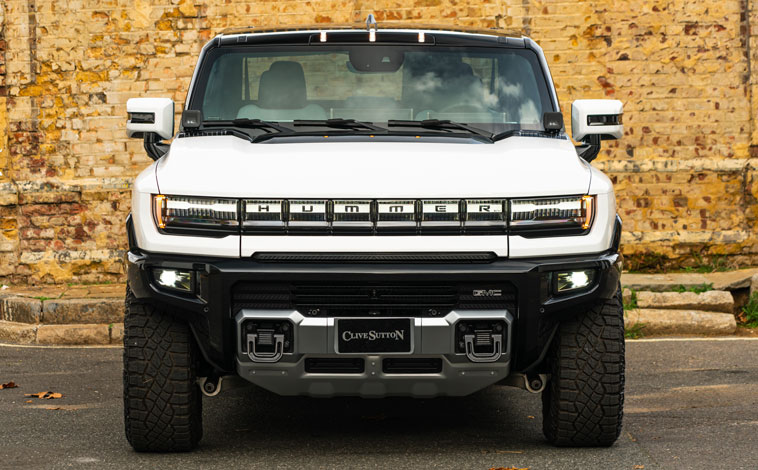
Introducing the mighty GMC Hummer EV
High-performance and luxury car specialist Clive Sutton has brought the first GMC Hummer [...]
Gridserve offers fastest EV charging
Gridserve has installed the UK’s fastest car charger for public usage at its [...]